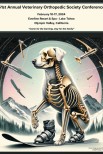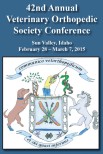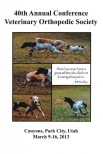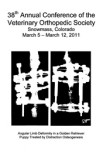Avulsion of the lateral head of the gastrocnemius is an uncommon diagnosis. Nonetheless, it is a possible cause of lameness in dogs, and it could be misdiagnosed as a cranial cruciate ligament injury if a systematic approach to clinical case management is not followed. The treatment of choice for avulsion of the gastrocnemius is surgical stabilisation. The proximity to the peroneal nerve and scarcity of bone for purchase for stabilisation are surgical challenges. However, the stabilisation by a spiked washer and screw can yield an excellent outcome for return to function.
Hindlimb lameness is a common complaint in small animal practice, and the rupture of the cranial cruciate ligament is one of the most common causes of hindlimb lameness in dogs.
This case report discusses a lateral head of the gastrocnemius muscle's avulsion in a 4-year-old dog that was initially misdiagnosed as a cranial cruciate ligament rupture. It was characterised as such due to its traumatic, acute onset, painful stifle and radiological finding of stifle joint effusion on initial presentation. Despite the temptation to attribute this patient's symptoms to a cranial cruciate ligament tear, it was subsequently confirmed to be intact. The interesting aspect of this case is how a rare condition mimics a frequent diagnosis. Therefore, when faced with a dog with hindlimb lameness, it is essential to rule out other causes of lameness with a thorough orthopaedic examination and radiographs. Although avulsion of lateral origin of the gastrocnemius is an uncommon cause of hindlimb lameness in dogs, it must be included in the differential diagnoses.









